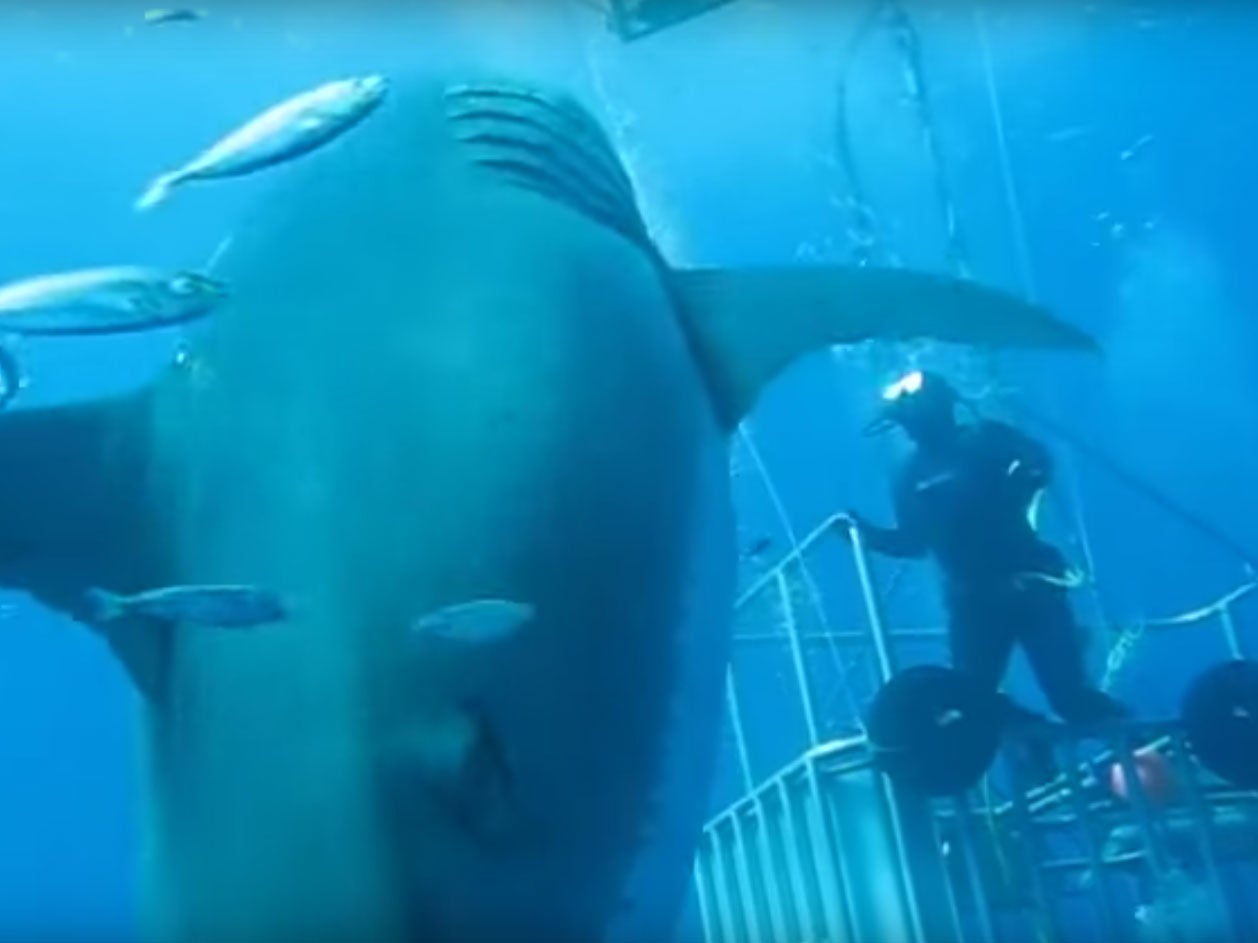Marine researcher captures video of close encounter with Deep Blue, the giant great white shark
At six metres long and weighing over two tons, Deep Blue dwarfs the divers and their shark cage

A shark researcher has captured amazing footage of his close encounter with a huge great white shark, believed to be the largest ever filmed.
Mauricio Hoyos Padilla, Director of shark conservation group Pelagios Kakunja, posted the video of his encounter with Deep Blue on Facebook.
They spotted the shark near Guadalupe Island, a volanic island around 150 miles off the west coast of Mexico.
The video shows the huge six-metre long, 50-year-old shark dwarfing the divers and their shark cage as she swims by.
Her weight has previously been recorded as around 2.2 tons, but may well be more now - as her swollen belly suggests she could be pregnant.
A post published alongside the video, Padilla wrote: "When I saw Deep Blue for the first time, there was just one thought in my mind - hope."
"A shark of that size is at least 50 years old and that tells me protection and conservation efforts are really working."
No accurate global population numbers of Great White Sharks are available, but the fact that Deep Blue is still swimming in the ocean suggests that measures to protect these animals are working.
In pictures: 'Shark', BBC's pioneering new wildlife series
Show all 10However, Padilla said that despite her intimidating appearance, Deep Blue could well be in danger.
"This amazingly enormous female is carrying several little baby white sharks, just waiting to be swimming free in the ocean."
But, he explained that when these sharks give birth, they tend to go to shallower areas, that are full of food and free of natural predators.
However, the fact that these areas are closer to shore means that the sharks are more threatened by human activity, such as fishing.
Padilla uploaded the footage, which was filmed in June, in order to draw more attention to the efforts to preserve the species in the wild.
The smaller pups can easily get caught in nets, and the high value of white shark parts, such as their teeth, make them attractive to fisherman.
Hopefully, through the efforts of conservation groups like Pelagios Kakunja, Deep Blue and her children will last much longer in the wild.
Subscribe to Independent Premium to bookmark this article
Want to bookmark your favourite articles and stories to read or reference later? Start your Independent Premium subscription today.

Join our commenting forum
Join thought-provoking conversations, follow other Independent readers and see their replies